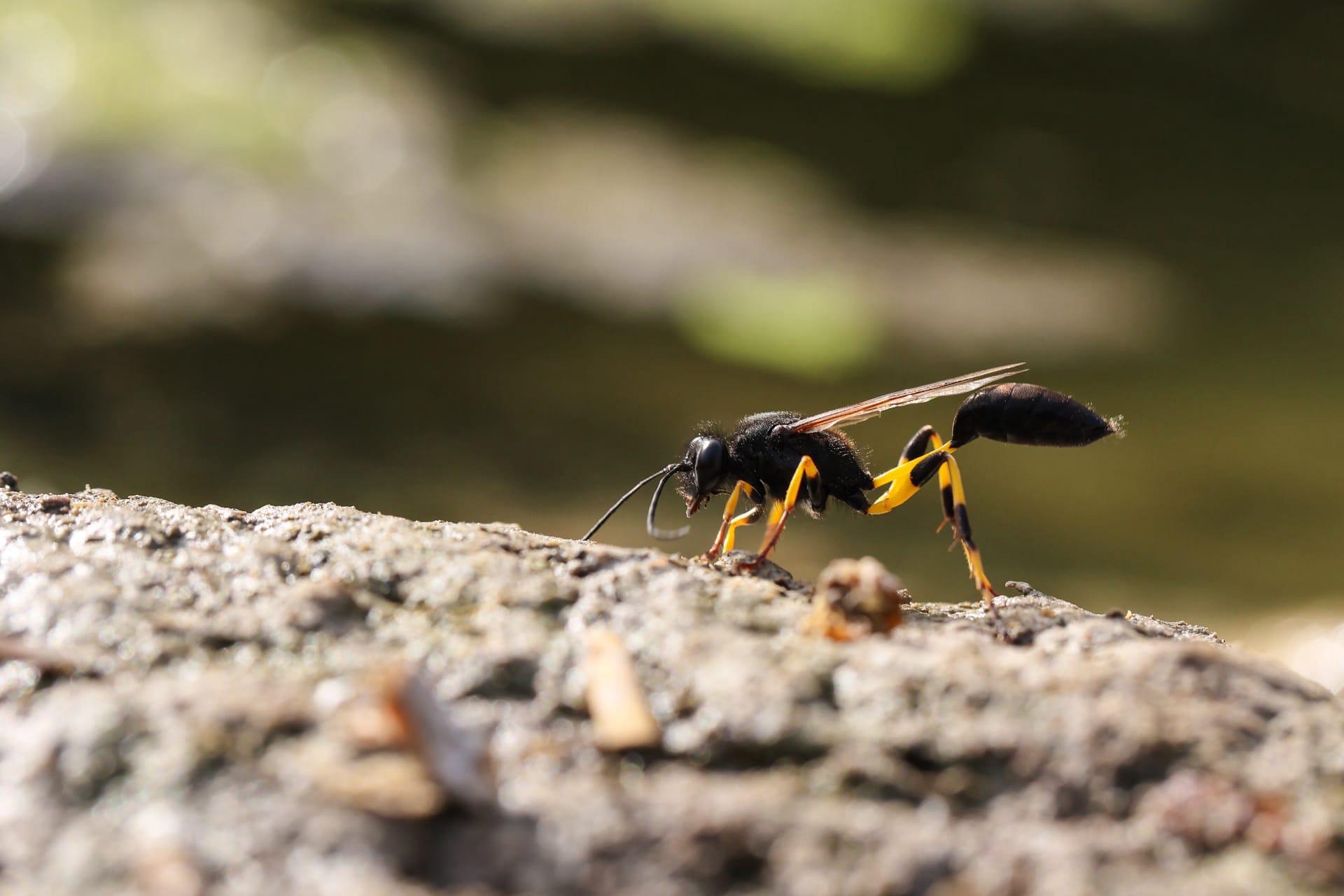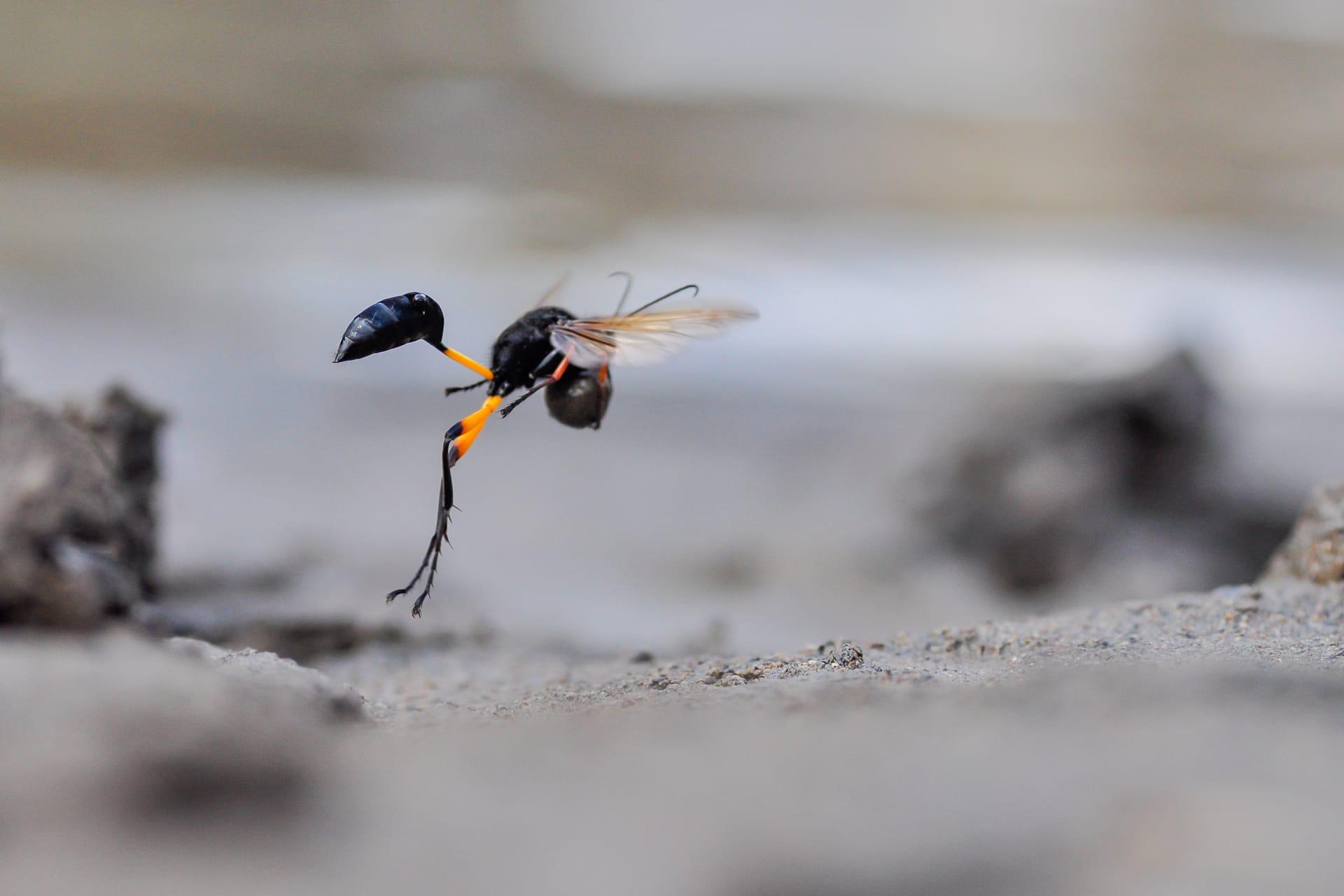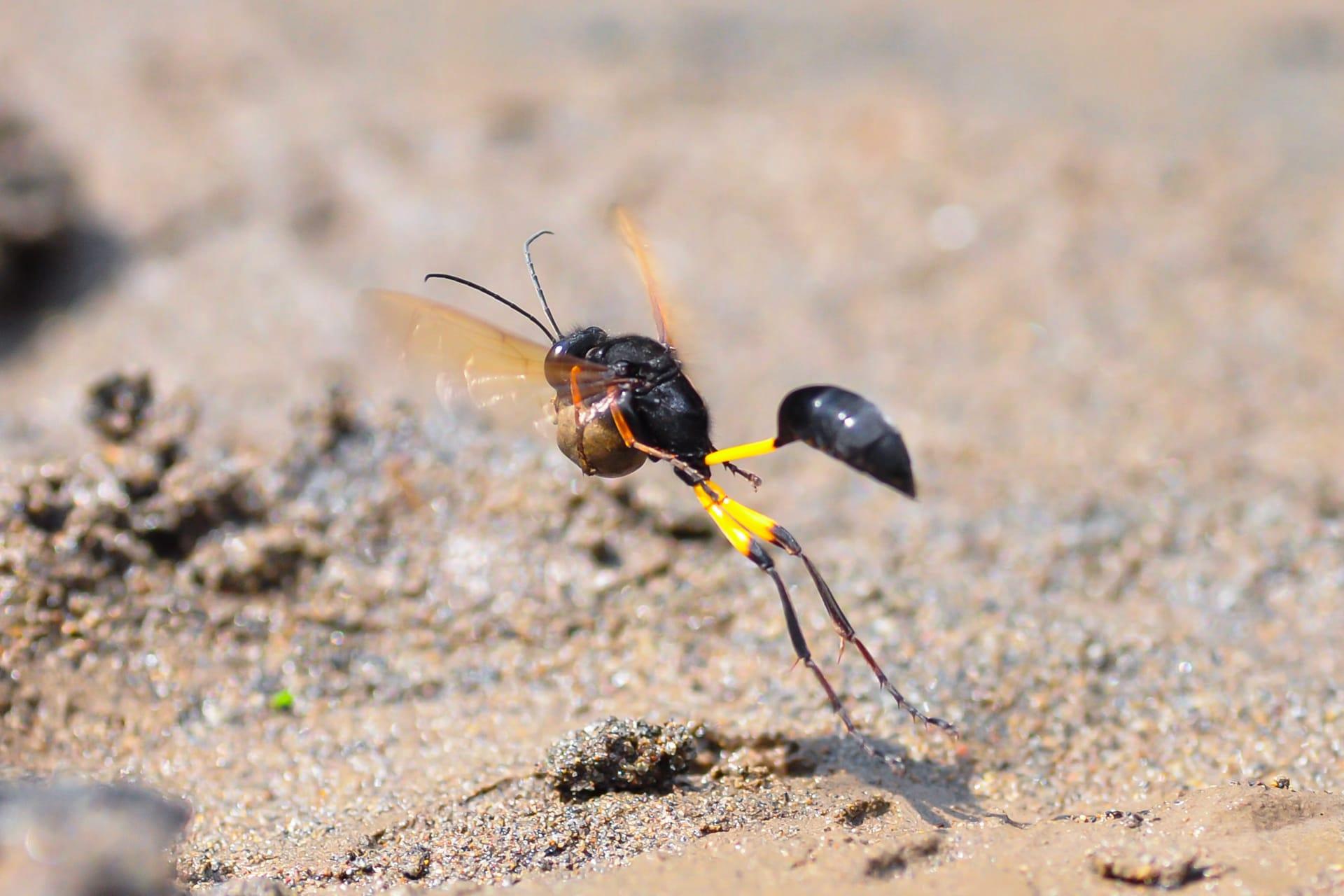Mud Wasp
- Home /
- Mini Encyclopedia /
- Animal /
- Mud Wasp
1
Mud Wasps, scientifically known as species within the Hymenoptera order, belong to various genera such as Sceliphron and Chalybion. These fascinating insects are part of the Sphecidae and Crabronidae families, characterized by their slender bodies and a distinct waist, separating the thorax and abdomen. Their appearance varies, with some showcasing metallic blue or green hues, while others exhibit more subdued brown or black tones. The size of Mud Wasps can range from 0.5 to 1.5 inches, making them easily noticeable in their natural habitats.
Mud Wasps are found in diverse environments across the globe, thriving in regions ranging from North America to Australia. They are particularly common in temperate and tropical climates, where their preferred habitats like gardens, fields, and forests are abundant. These wasps are often seen around buildings and other human-made structures, as they seek out mud for nest-building. The distribution of Mud Wasps is influenced by the availability of mud and prey, such as spiders, which they paralyze and store as food for their larvae.

2
Question: Do Mud Wasps pose a significant threat to humans?
Answer: Contrary to popular belief, Mud Wasps are not aggressive towards humans and rarely sting. They are solitary insects, focusing more on building nests and hunting prey than interacting with humans. Their stings are reserved primarily for defense or when they feel threatened. Moreover, their venom is not particularly harmful to humans unless there's an allergic reaction. Understanding this behavior helps in appreciating their presence in our environment as non-threatening and integral to ecological balance.

3
Mud Wasps exhibit remarkable survival strategies. One of their key tactics is the construction of cylindrical mud nests, which they meticulously build using mud balls collected from nearby sources. These nests, often found attached to sheltered surfaces like walls or under eaves, are used for laying eggs. Each chamber within the nest houses a single egg, along with paralyzed spiders or insects, serving as food for the emerging larvae. This method of provisioning their offspring ensures a reliable food source in a protected environment.
Another survival strategy is their solitary nature, which reduces competition for resources among their own species. Mud Wasps are also skilled hunters, primarily preying on spiders, which they paralyze with their sting and then transport back to their nests. This hunting method not only provides food for their larvae but also helps in controlling spider populations, showcasing their role as natural pest controllers in their ecosystems.

4
In the ecosystem, Mud Wasps play a crucial role in maintaining the balance of their local environments. As predators, they help control the population of spiders and other small insects, which could otherwise become overabundant. This predatory behavior is integral to the food web, as it keeps the insect population in check, thereby supporting the stability of the ecosystem.
Mud Wasps also contribute to the process of pollination. While they primarily feed on spiders and insects for their larvae, adult Mud Wasps often visit flowers for nectar. During these visits, they inadvertently transfer pollen from one flower to another, aiding in the reproductive process of plants. This makes them secondary pollinators in many ecosystems, highlighting their importance in supporting plant diversity and health.

5
Film: "Winged Architects: The Ingenious World of Mud Wasps" is a documentary produced in the United Kingdom in 2019. This film explores the intricate lives of Mud Wasps, showcasing their nest-building skills and survival techniques. Viewers are taken on a journey through the wasps' lifecycle, from nest construction to hunting strategies, revealing the complexity and efficiency of these often-overlooked insects.
Book: "Mud Wasps: Architects of the Insect World," authored by American entomologist Dr. Linda Archer in 2018, provides an in-depth exploration of Mud Wasp behavior, biology, and their ecological importance. Archer's work is celebrated for its comprehensive research and engaging narrative, making it an invaluable resource for both entomology enthusiasts and professional researchers.
Book: "Insects Unveiled: The Secret Life of Mud Wasps," written by British biologist Dr. Simon Hayes in 2021, delves into the fascinating world of Mud Wasps. Hayes' book combines scientific research with vivid imagery, offering insights into the complex social structures and survival strategies of these insects. His focus on the ecological impact of Mud Wasps provides readers with a deeper understanding of their role in nature.